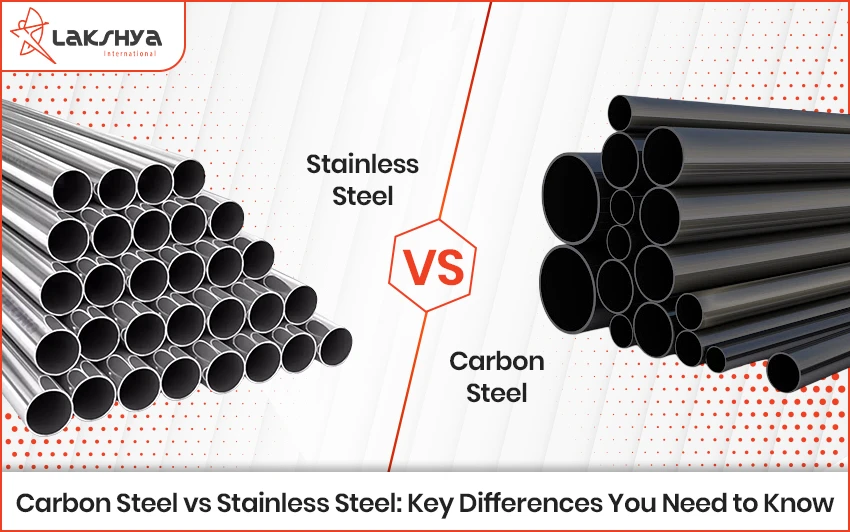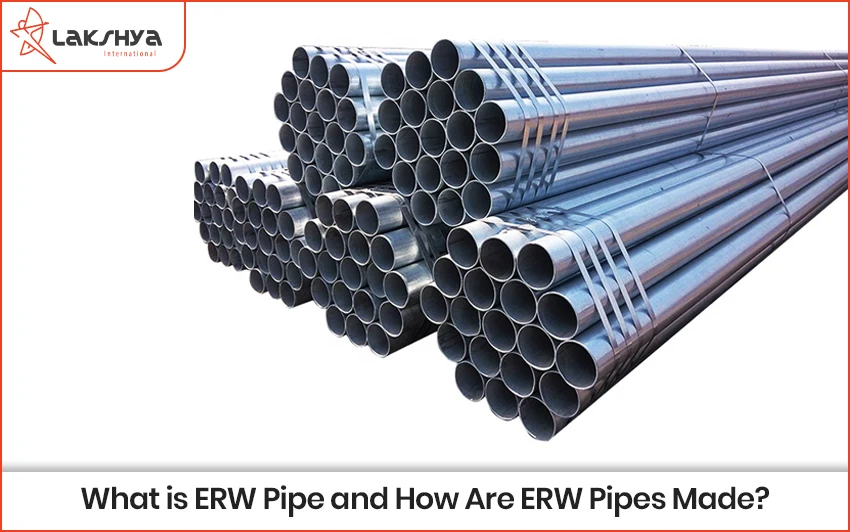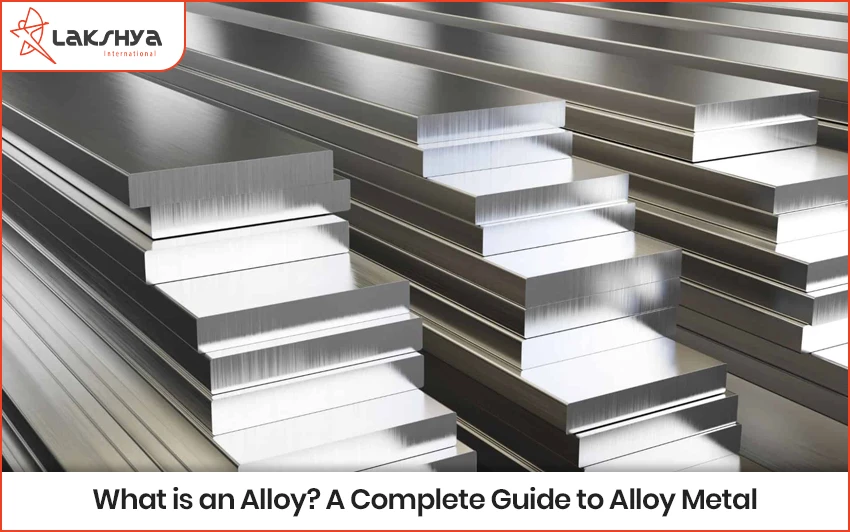What is AISI 301 Stainless Steel?
AISI 301 Stainless steel, similar to other types of steel, is composed of a combination of various elements to form an alloy. The commonly used alloy in non-corrosive stainless steel is chromium, which is also employed in conjunction with nickel, molybdenum, and other elements for specific applications in non-corrosive stainless steel.
The presence of different alloys in the manufacturing process determines the magnetic properties and resistance to corrosion of stainless steel.
Properties of AISI 301 stainless steel: Applications and features
AISI 301 stainless steel is a type of steel that contains more than 10.5% chromium, along with other elements in lower quantities, making it highly resistant to corrosion. The presence of chromium enables the formation of a passive layer of chromic-oxide upon exposure to oxygen, which is impervious to light and heat, and provides the steel with excellent resistance to abrasion. This corrosion-resistant steel is widely used in various applications, including washing drums.
The physical and mechanical properties of corrosion-resistant AISI 301 stainless steel are comparable to anodized aluminium. When the outer layer of a material is compromised, it affects both the substance and its surface to a significant extent.
Features of 301 Stainless Steel Sheet and AISI 301 SS plates:
High toughness and impact resistance
- These sheets exhibit excellent corrosion resistance
- They have excellent workability including stamping, welding, machining and fabricating
- They have a High strength which helps them to withstand in high temperature
- These sheets have a smooth surface finish that can be easily sterilized and cleaned
- The sheets are Temperature resistance to high heat
Mechanical Characteristics
If you are unsure about the importance of the properties mentioned above, you can refer to each one for a more detailed explanation.
In terms of strength and elongation, the properties of inoxidizable steel depend on the grade. Some grades have high strength but low elongation, while others have low strength but high elongation. In comparison to carbon steel, inoxidizable steel performs well in terms of yield strength.
Strength
Aisi 301 stainless steel exhibits similar performance to other carbon steel grades when exposed to high temperatures. Its ability to retain strength at high temperatures, specifically above 500°C, makes it more fire-resistant than other materials. Additionally, it retains higher rigidity than carbon steel when heated above 300°C.
Tensile Strength
When it comes to tensile strength, AISI 301 stainless steel surpasses aluminium, brass, and mild steel, making it superior to these materials. Precipitation hardening and martensitic grades exhibit the highest tensile strength, followed by brittle grades. These grades can have tensile strengths that are twice as high as commonly used 304 and 316 steels. Duplex steel, in particular, has a very high strength-to-ductility ratio.
Increased work hardening rate
A high strength-to-weight ratio is observed when a metal can be made stronger through cold working. Anodizing and cold working of stainless steels enable control over the strength of the steel at the desired level. Therefore, the same grade of steel can be utilized for various applications by adjusting the material’s strength. For instance, annealing and cold working the same grade of steel can make it suitable for use as a spring or a bendable wire.
Like all metals, AISI 301 stainless steel properties include electrical conductivity, although it is relatively low compared to other steels. In environments with strict hygiene standards or where electrical devices are subject to corrosion or moisture, AISI 301 stainless steel boxes are utilized to protect electrical appliances.
It should be noted that although austenitic stainless steels are typically non-magnetic, magnetic properties can be generated through cold working in some types of austenitic stainless steel. All other types of stainless steel possess magnetic properties.
Chemical Properties of Stainless Steel
The distinctive properties of AISI 301 stainless steel are attributed to the AISI 301 chemical composition, which sets it apart from other materials.
Oxidation Resistant
Aisi 301 stainless steel‘s outstanding feature is its ability to resist oxidation, making it highly suitable for various industrial applications. This quality is attributed to the presence of chromium in stainless steel, which can make up to 26% of the material’s weight in some grades. Unlike other metals that require coating or anti-corrosion paint, stainless steel forms a natural chromium oxide coating on its surface that prevents corrosion from worsening even if the coating is damaged, ensuring long-lasting durability.
Other Properties
Stainless steel is highly biologically inert, making it a suitable material for health equipment, such as surgical instruments, trauma screws, and plates. It is also widely used in cutlery and culinary appliances. The substance is resistant to acid, base, and organic compounds, which makes it versatile in various applications. Stainless steel aisi 301 has good chemical resistance against acids, bases, and organic chemicals. The acid resistance level may vary across grades, with some able to withstand highly concentrated acids. The material is also suitable for use in the chemical sector for storage, handling, and other processes. Furthermore, 301 stainless steel properties exhibit excellent resistance to moisture, salt, sulphur, carbon dioxide, and chloride-containing chemicals, allowing it to withstand harsh environments for longer periods compared to most other metals.
Physical Properties of Stainless Steel
The distinctive features of AISI 301 stainless steel properties make it a top-notch material for creating ASME pressure vessel connectors and other related projects.
Strength
The ability of a material to withstand tension without breaking is measured by its tensile strength. Compared to mild steel and aluminium, AISI 301 stainless steel properties typically have higher tensile strength, particularly in martensitic and precipitation hardening grades. Some types of stainless steel have work hardenability, which means that they can be strengthened to a specific tensile strength using a combination of cold working and annealing techniques.
Ductility
Ductility refers to a material’s ability to deform or stretch under stress. Stainless steel, along with its derivatives, is known for its exceptional ductility. In particular, austenitic stainless steel, like AISI 301, has high ductility, with elongation values exceeding 50 percent in some cases. To achieve the ideal combination of strength and ductility, cold working can be used to obtain the desired characteristics of AISI 301 stainless steel.
Corrosion
Aisi 301 stainless steel properties have a protective layer formed by the element chromium, which creates a self-healing oxide coating on the material’s surface. This protective layer is present in all types of stainless steel, making them resistant to corrosion. Unlike mild steels that require coatings or paint to protect them from corrosion, stainless steel’s self-healing ability ensures that any damage to its surface won’t impact its ability to resist corrosion.
Resistance
Aisi 301 stainless steel properties are capable of enduring high temperatures without undergoing any deterioration, unlike mild steel. The steel retains its strength and durability even when exposed to temperatures as high as 1100 degrees Celsius. Furthermore, it remains ductile and hard at sub-zero temperatures, withstanding as low as -196 degrees Celsius, making it an ideal choice for applications that require resistance to temperature extremes. Austenitic stainless steel is a type of stainless steel that can be utilized at even lower temperatures.
Applications of AISI Stainless Steel
Automobiles and Other Forms of Transportation
Aisi 301 stainless steel was initially employed to fabricate prototype cars in the automotive industry, but now various automotive parts, including exhaust systems, grilles, and car components, are being manufactured from it. With advancements in technology, structural components are increasingly being made from stainless steel.
In addition, it is widely used as a material for the production of cargo containers, road tankers, and garbage collection trucks in various modes of transportation. Its corrosion resistance makes it an excellent choice for the transportation of chemicals, liquids, and food products. Due to its low maintenance requirements, cleaning and maintaining stainless steel in good condition is simple and cost-effective.
Medical Technology
Aisi 301 stainless steel is preferred for use in hygienic and sterile environments because of its corrosion resistance and ease of cleaning. The medical industry uses stainless steel extensively for the manufacture of various instruments including dental and surgical equipment. Additionally, it is used for the construction of medical devices like MRI machines, kidney plates, cannulas, steam sterilizers, and operating tables.
In the production of surgical implants like artificial hips and replacement joints, AISI 301 stainless steel is a preferred material. Similarly, stainless steel is employed for the fabrication of different types of joining systems like pins and sheets that are used for the treatment of bone injuries.
Construction Industry
Stainless steel, particularly AISI 301 stainless steel, has become an important material in the construction industry due to its properties such as strength, durability, and flexibility. It is commonly used in both interior and exterior applications, including worktops, backsplashes, handrails, and cladding for high-impact buildings to protect them from weathering. It has become a popular element in modern architecture due to its attractive finish, ease of maintenance, and ability to be welded. Stainless steel is also being embraced in the construction industry for its environmental benefits, as it is a highly recyclable material. Its polished or grainy finish can enhance the natural lighting of a building and add to its aesthetic appeal. Examples of structures that utilize stainless steel in their design include London’s Eurostar Terminal and Singapore’s Helix Bridge.
Aircraft Construction
The aviation industry shows a preference for stainless steel due to its strength and ability to withstand high temperatures in harsh environments. It is used in numerous applications, including aeroplane frames and jet engines, to prevent corrosion. Stainless steel is also commonly used to build landing gear, which requires sufficient strength and stiffness to support the weight of an aircraft upon landing.
Food and Catering Industry
Aisi 301 stainless steel is commonly utilized in the food and catering industry to manufacture kitchen equipment, cutlery, and cookware. The less ductile types of stainless steel are used for knives and other kitchen utensils, while the more ductile ones are used for grills, cookers, saucepans, and sinks.
Aisi 301 can be employed as a coating in a variety of devices, including freezers, refrigerators, washing machines, and countertops. Stainless steel is the preferred material for food production since it does not alter the flavour of the food. It is also resistant to corrosion, making it ideal for holding acidic beverages like orange juice.
Additionally, stainless steel is easy to clean, which prevents the growth of bacteria and enhances its value in food storage.
Vessel Fabrication
Aisi 301 stainless steel (UNS S30100) is highly susceptible to cold deformation among commonly used austenitic stainless steels. Due to its rapid work hardening rate, its tensile and yield strength increases rapidly with an increase in cold work. This response to work hardening is particularly important for structural items such as angle steel and channel sections, which are expected to increase in strength and stiffness after manufacturing. However, for deep drawing applications, a lower hardness rate is typically required, which can be achieved with higher nickel concentration in austenitic alloys (such as types 304, 304L, and 305).
Aisi 301 stainless steel is suitable for use in atmospheric conditions, but not in harsh corrosion environments or with chemicals such as acids, alkalis, and salts. While the material can support heavier loads in cold working conditions, using it in a hot working environment can reduce the weight of equipment and corrosion-resistant components.
Conclusion
Lakshya International is a renowned supplier based in India that specializes in providing SS UNS S30100 sheets and ASTM A240 301 stainless steel plates. Their products are manufactured to meet high-quality standards and are widely recognized in the industry. The company has a team of experienced professionals who ensure timely delivery and excellent customer service. Lakshya International offers competitive ss 301 prices and customizable solutions to meet the specific needs of its clients.
Contact us for more information!




